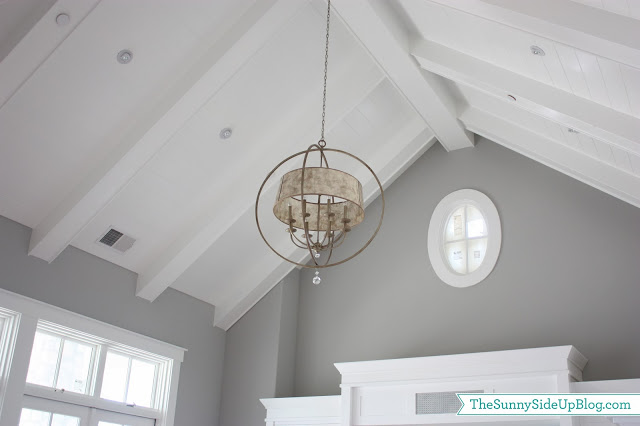One of the things that we suggested in our post on Furniture Shopping Tips was to measure your room and try out different furniture placement scenarios – either on paper or using a room planner – prior to shopping.
We still think that’s pretty great advice, but what if arranging furniture isn’t one of your strong points? Or you’ve never had to do it before?
ARRANGING FURNITURE:
1. Determine function
Think about how you want this room to function. What activities will be taking place in the space (TV viewing, games, conversation, work, etc.)?
How many people do you need to comfortably seat? Will your family always be sitting or will you need a spot to lay or lounge? Or more than one?

source
Answering questions like these will give you a better feel for the type, quantity, and size of furniture that you’ll need.
2. Find your focal point
Determine where the focal point is in your room and start arranging furniture in a way that takes full advantage of it, if possible.
Some common focal points are fireplaces, windows, built-ins, and/or the TV. Which one(s) you choose to be your main focal point can be dependent on how you want the room to function. In this beautiful living room by Swanson Homes, they’ve arranged the furniture to take advantage of the fireplace, TV, and window (to the right of the fireplace).

Swanson Homes | Photo: PK/Schneiderman’s
{TIP: If there isn’t an obvious focal point, you can create one with free standing furniture such as entertainment consoles , bookshelves, or a chest or credenza with artwork above.}
3. Consider traffic flow
Where are the major and secondary traffic patterns in the space? It can help to draw arrows indicating these on your floor plan.
Once they’re set, keep them in mind as you’re arranging furniture and considering the different options for placement. Will you be able to easily move in and out of the room and around the furniture?

4. Move away from walls and get creative
A cozy furniture grouping is the goal of any seating area. It not only promotes easy conversation, but also goes a long way in making the space feel well-designed and pulled together (literally).
Don’t be afraid to move furniture away from walls to create a more intimate seating area, and even consider angling furniture if it makes sense with the architecture of the room and/or traffic pattern.

source
{TIP: When the focal point is already on an angle it may, but not always, work to place the furniture in line with that angle. Test it out and see.}
5. Balancing Act
Evenly distribute furniture so that the room doesn’t feel heavy in one area and light in another, and match the scale of the furniture with the scale of the room.

Builder: Swanson Homes | Photo: PK/Schneiderman’s
SHOP THIS ROOM: chesterfield sofa | chairs | end table | cocktail table
6. Know your numbers
Arranging furniture on paper or a computer screen can be a little deceiving because sometimes spaces in the room can seem larger (or smaller) than they are in real life.
To avoid any surprises or disappointments once you put your plan in place, always use tried and true space planning measurements:
- Major Traffic Patterns – 36″
- Minor Walkways – 24″
- Clearance for the opening of a door – 36″
- Space between sofa or chair and coffee table – 14-18″
- Space across furniture groupings – Min 48″ — Max 96″
- Space from TV to seating – 3 times the size of TV screen
7. Anchor and accent
Consider using an area rug to anchor your furniture grouping(s) and have a table easily accessible from each seat in the room to set a drink or book.

source
8. Plan for lighting and outlets
It’s a bummer to implement your well-thought-out arrangement and realize that, even though your lamp is in the perfect spot, there’s nowhere to plug it in!
When designing a new home, consider planning outlets with furniture placement in mind. Include a nice combination of ambient, task, and decorative lighting options for a well-rounded space.

Image: House of Fifty/Janell Beals
In an existing home, you may have to get a little more creative with cords, but you should still plan to have lighting placed in strategic spots throughout the space.
9. Sometimes one is not enough
Depending on the size of your room and the function(s) you need it to accommodate, you may need more than one seating area.
For larger rooms, try arranging furniture into two or more functional zones and try out different arrangements to fit within those areas.
Article source: http://blog.schneidermans.com/?p=2894


